
When I saw photos of Costa Rica’s mystical cloud forests, I knew I had to visit and see this unique region in person! What better place to experience these than Monteverde, home to some of Costa Rica’s most famous cloud forests. A cloud forest is essentially a rainforest at a high altitude – so get ready to head into the mountains!
Here are my top things to do in Monteverde, Costa Rica!
Top Things to do in Monteverde, Costa Rica
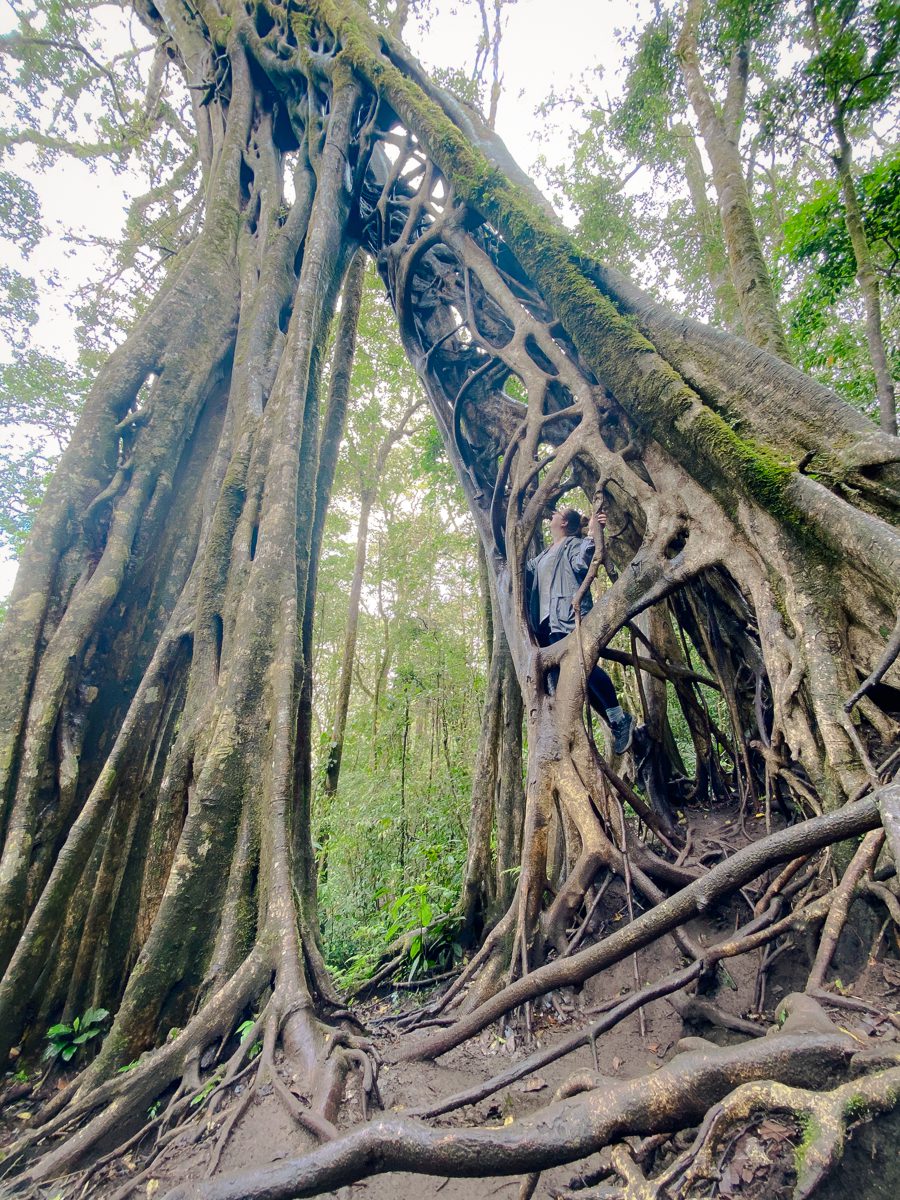
Have you ever seen a tree like this?! I hadn’t!
Climb the Ficus Tree (El Arbor Hueco)
This Monteverde adventure is a slightly off the beaten path attraction: a large ficus tree! These trees are quite common in this area but can be damaging to the rest of the forest. Essentially, they grow around an existing tree and sap its resources, until the original tree dies and rots away. When that happens, all that’s left is the shell of the ficus tree, just like this one!
When you arrive, you can park on the side of the road and hike about 5-10 minutes into the forest. You’ll see a steep, rough path from other travelers. Just when you think you’re in the wrong place, keep going and you’ll find it.
Some visitors brave the 75-foot high ladder-like climb through the trunk of the ficus tree, but it was so muddy that I only stepped in for a moment. The inside of the tree offers a unique view of the intricate web of branches climbing towards the sky. I’d never seen anything like it!

This bridge was sooo long, it almost disappeared into the fog.
Visit Selvatura Park
Selvatura Park is the perfect stop if you have limited time in Monteverde, because it has a little bit of everything! You can walk the hanging bridges through the top of the cloud forest, get an adrenaline rush ziplining over the trees, and see lots of animals in the hummingbird garden, butterfly garden and reptile exhibition, and sloth sanctuary.
Ziplining
We’re not big adrenaline junkies, so we skipped the ziplining during our visit. However, if this is your thing, I highly recommend doing it here! The ziplines are very high up in the forest, so you’ll feel like you’re flying over the canopy. Plus, Monteverde is where ziplining was invented in the 1990s, so it’s the perfect place to try it!
Hanging Bridges
For a slightly less heart-palpating experience, you can take the treetop walkways through the hanging bridges. There are eight bridges that range from 170 feet long to 560 feet long! This is one of the longest hanging bridges we took during our trip and it was an unforgettable experience to be so high up in the cloud forest. Despite being so long, the bridges felt more stable than some of the others we visited in Costa Rica.
The trail is well maintained with concrete bricks (not dirt) so it is less muddy than others we took. While there were some short steep hills, most able-bodied individuals should be able to complete the trail without any problem. The hike is 1.9 miles long and will take about two hours.
A word of warning: the drive to Selvatura Park was challenging. While short, it was almost entirely dirt and gravel once we left the main city of Monteverde. The unpaved road plus numerous potholes definitely kept me on my toes, but by driving slowly, we made it in our little sedan with no issues or flat tires. Just be mentally prepared before you go (or rent an SUV or 4×4)!
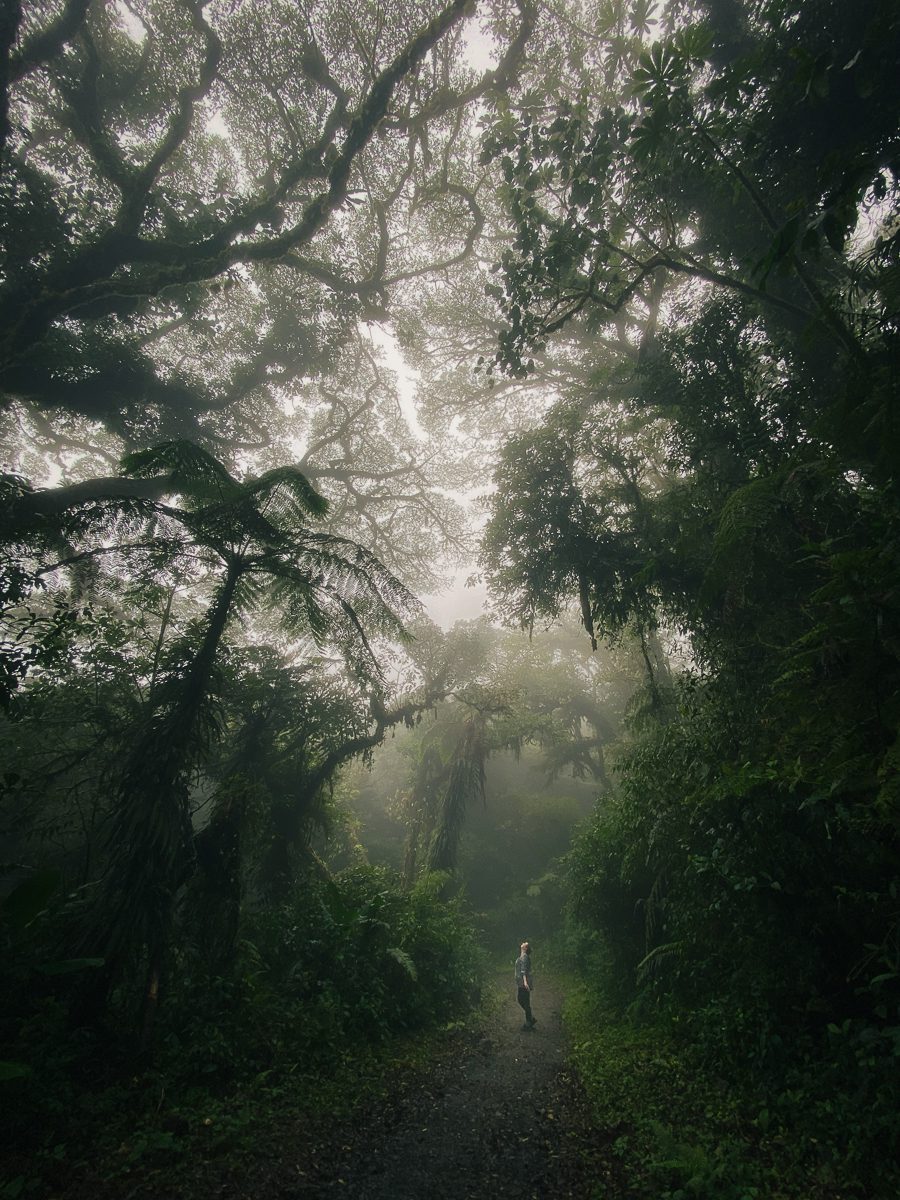
This has to be an enchanted forest, right?
Hike Through the Monteverde Cloud Forest
A must-visit is this region’s namesake – Monteverde Cloud Forest. This reserve was established by Quakers in the 1970s to protect the rich biodiversity in the area. Here, you can hike trails of varying difficulties through the cloud forest. The elevation is so high that moss and plants cover almost every surface, and you’re often hiking into the clouds. It’s otherworldly.
Tons of wildlife exists inside the park, including the region’s famous bird, the resplendent quetzal! Birders from around the world come to Costa Rica to see this bright turquoise bird. We were lucky enough to see one from afar during our hike, but for the best chance of seeing wildlife, I highly recommend hiring a guide.
The most popular trails within the park (and the ones we took) are as follows: from the entrance, take the Sendero Bosque Nuboso to the Sendero La Ventana, and then loop back around to take the Sendero Camino back to the entrance. This route is about 2.5 miles long, but includes some seriously steep hills on the Sendero La Ventana (there are warning signs at the trailhead that freaked me out!). Despite this, the trail is doable by most fitness levels – just take a pause when you need it and keep going!
Sendero Bosque Nuboso Trail
The Sendero Bosque Nuboso trail was where we saw the resplendent quetzal! Otherwise, the trail was fairly straightforward and full of lush greenery and flora.
Sendero La Ventana Trail
The steep hills at the Sendero La Ventana were rough, but after stopping a few times for air, we made it to the top of the Continental Divide. This is where the Atlantic and Pacific slopes meet – water running down the east side of this divide will flow into the Atlantic, with water running down the west side flowing into the Pacific. There are lookouts to both sides of this divide, but due to the altitude, it’s highly likely you’ll be deep within the clouds and not able to see anything.
My favorite part of the hike was the area around this trail, nicknamed the Elfin Forest. Walking through the clouds amongst the moss-covered trees was truly enchanting. I felt like we had stepped right into Lord of the Rings. It was unlike any other hike we went on in Costa Rica, and I recommend hiking this trail for this magical experience alone.
Sendero Camina Trail
Walking back on the Sendero Camina, the trail becomes quite wide and is mostly downhill or flat, although quite muddy. This wide path accentuates how tall the trees in this area really are. After the steep climb to the Continental Divide, this was a welcome and relaxing way to end the hike!
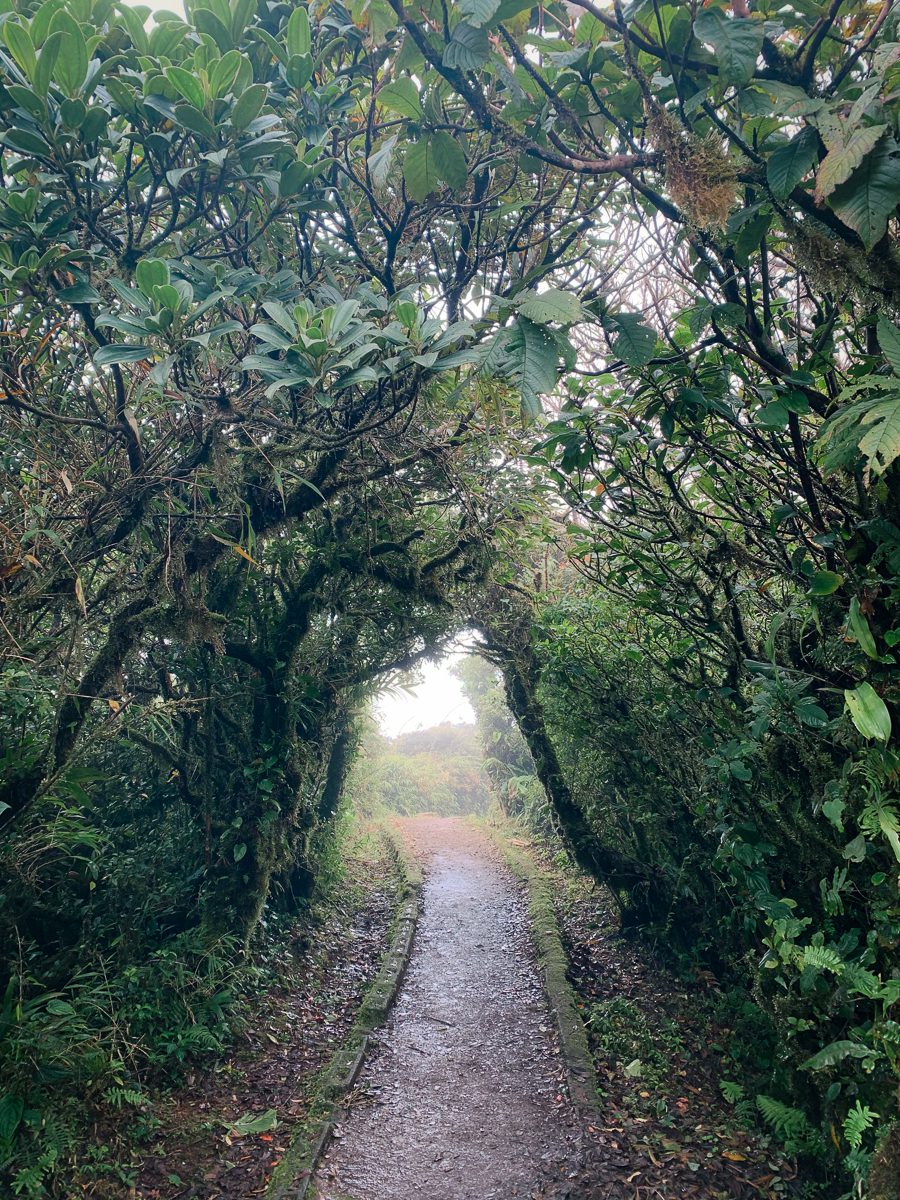
Everything in Monteverde is so green!
Know Before You Go
This region is incredibly popular during the weeks between Christmas and New Years, as well as around Easter. These are the times when Americans come down to vacation during the holidays. Prices skyrocket during this time, so if you can, avoid visiting during these peak times! However, even during non-peak season, prices in Costa Rica will likely be higher than most other Central American countries (especially near popular tourist destinations). Be sure to factor this into your budget. During our visit, prices for meals and hotels were near the same as we would pay at home in the U.S.
Additionally, due to the large number of American tourists that visit, prices are often listed in Colónes and USD. Dollars are accepted as cash in many locations.
Cell phone service was spotty throughout much of this area. I recommend downloading any maps and reference materials you need before leaving home!
Getting There
Most tourists fly into Juan Santamaría International Airport (SJO, not to be confused with California’s San Jose airport!). This airport is located on the western side of Costa Rica’s capital city, San Jose. From here, you can take a local bus to Monteverde, or my preferred option, rent a car. While there are many tour companies that can take you sightseeing around the country, for the ultimate freedom to come and go as you please, I recommend renting a car. We used Adobe, a popular local agency.
Costa Rica is a fairly small country with tons of things to do outside of Monteverde, so it’s easy to visit multiple destinations on one trip, like we did during our Costa Rican road trip!
Where to Stay
There are numerous local hotels and Airbnbs tucked between the trees of the cloud forest that you can stay in. We opted for a treehouse in the jungle, which was super unique (you could hear the howler monkeys loud and clear each night)!
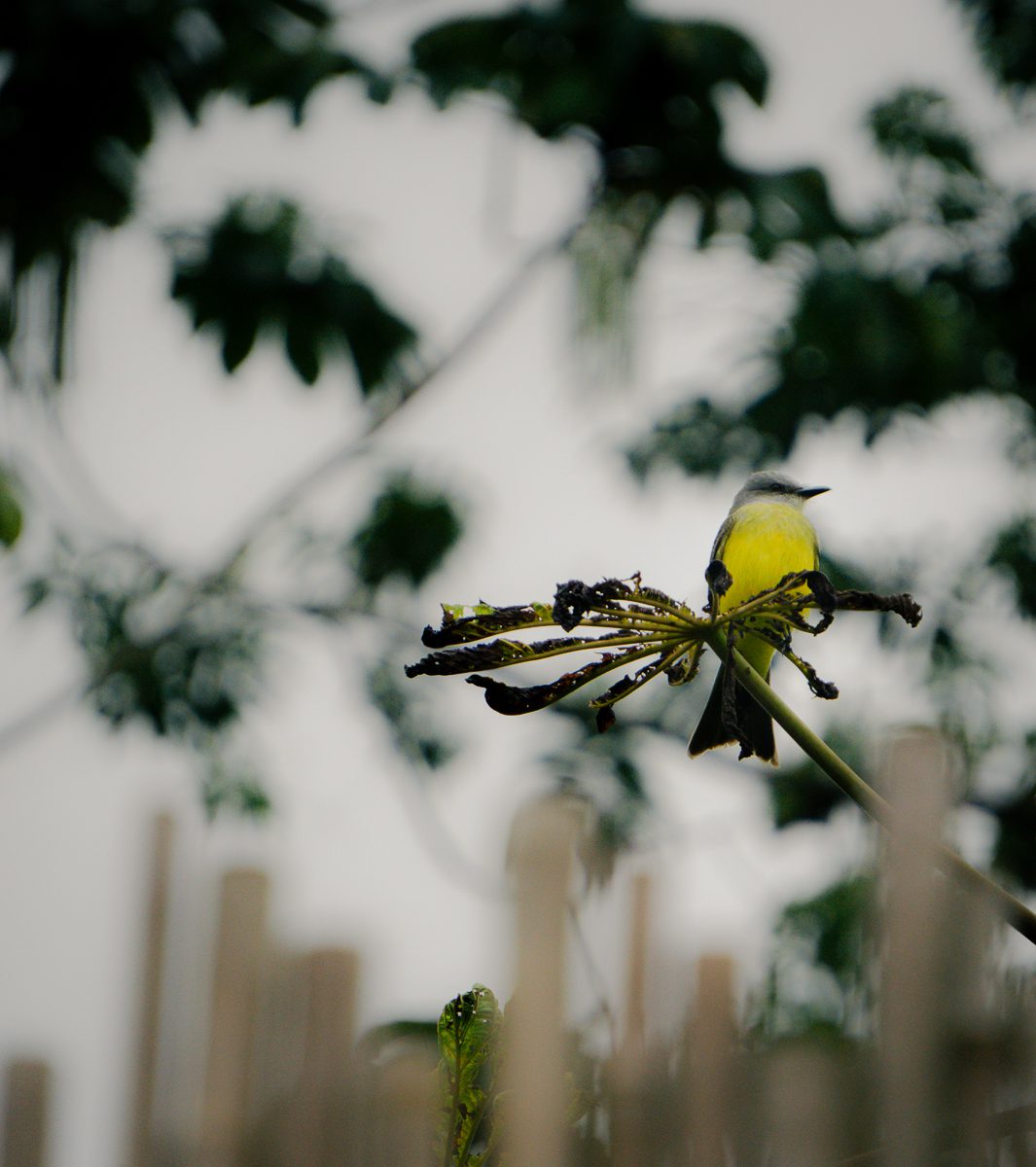
I loved these gorgeous yellow birds we saw everywhere.
Packing Considerations
It is fairly humid in Costa Rica year round, so pack breathable clothing. We brought very light raincoats that were perfect for protecting us from the odd rainshower, but light enough that we weren’t too warm. I also recommend exercise clothes for hiking and hiking shoes if you have them. They will make the trails (which can sometimes be muddy during rainy season) much more manageable.
Basics such as sunscreen and bug spray are a given – you’re exploring a tropical destination near the equator, after all!
If you’re prone to motion sickness, consider bringing some medication to take before getting in the car. The roads are filled with tight turns that will get you dizzy in no time!
For spotting wildlife, a pair of small binoculars would be helpful. If you’re a photographer, don’t forget your zoom lens!
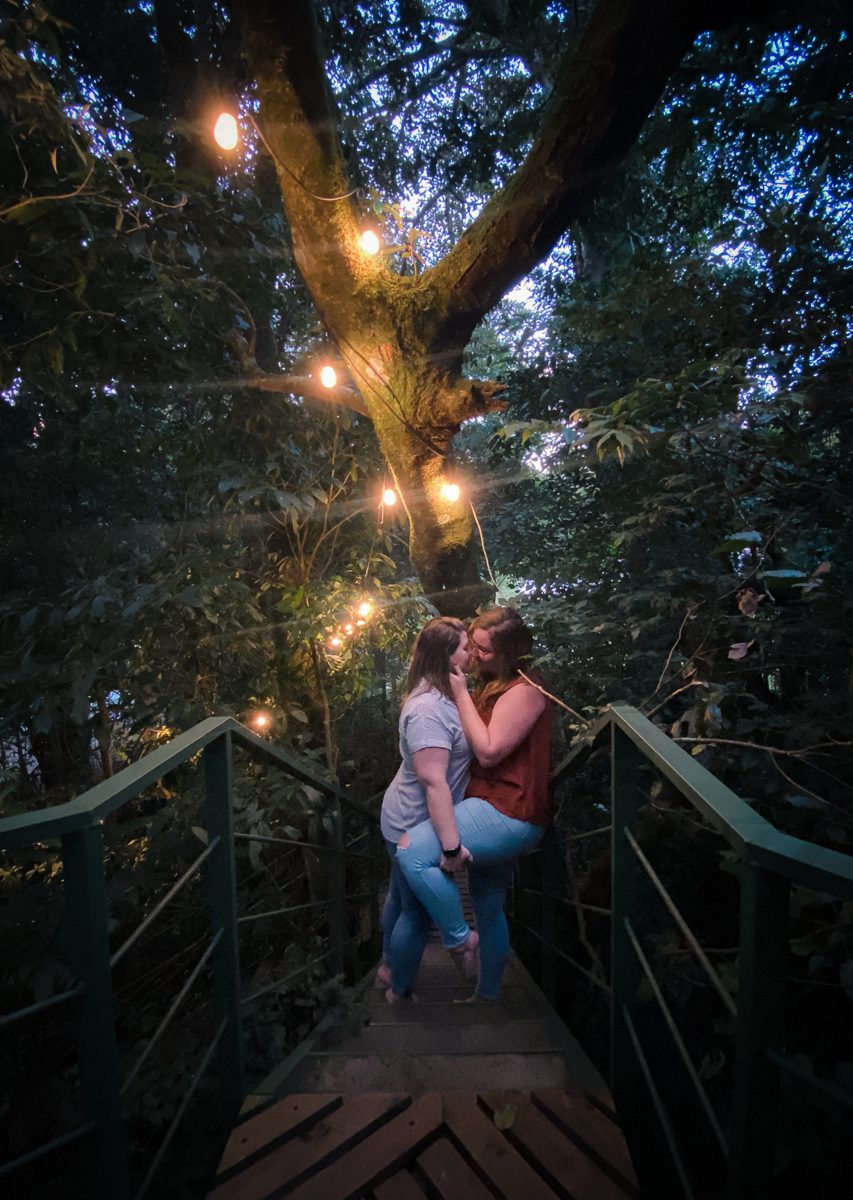
Our rental home was a treehouse in the forest – pretty magical, don’t you think?
LGBTQ+ Considerations
Costa Rica is one of the most queer friendly destinations in Central America! This was the main reason we chose to visit. While I’m all for breaking barriers and reducing stigma through travel, sometimes you just need a relaxing getaway where you can be yourself. That’s how we felt on this trip. No one questioned our choice of single bed or gave us weird looks as we held hands walking around the beach. While we did visit more tourist-heavy areas, which likely contributed to our experience, it was nice to not have to worry about being a lesbian couple while on vacation. As an added bonus, Costa Rica passed marriage equality in mid-2020! We felt good supporting a country that was making progressive and inclusive political decisions.
Read more: Top Safety Tips for Queer Travelers
Overall
Exploring the cloud forests of Monteverde was unlike any other destination I’ve visited. There are so many things to do and ways to see this incredible region!
What are some of your favorite things to do in Monteverde? Let me know in the comments!
Read more: Costa Rica Travel Guide


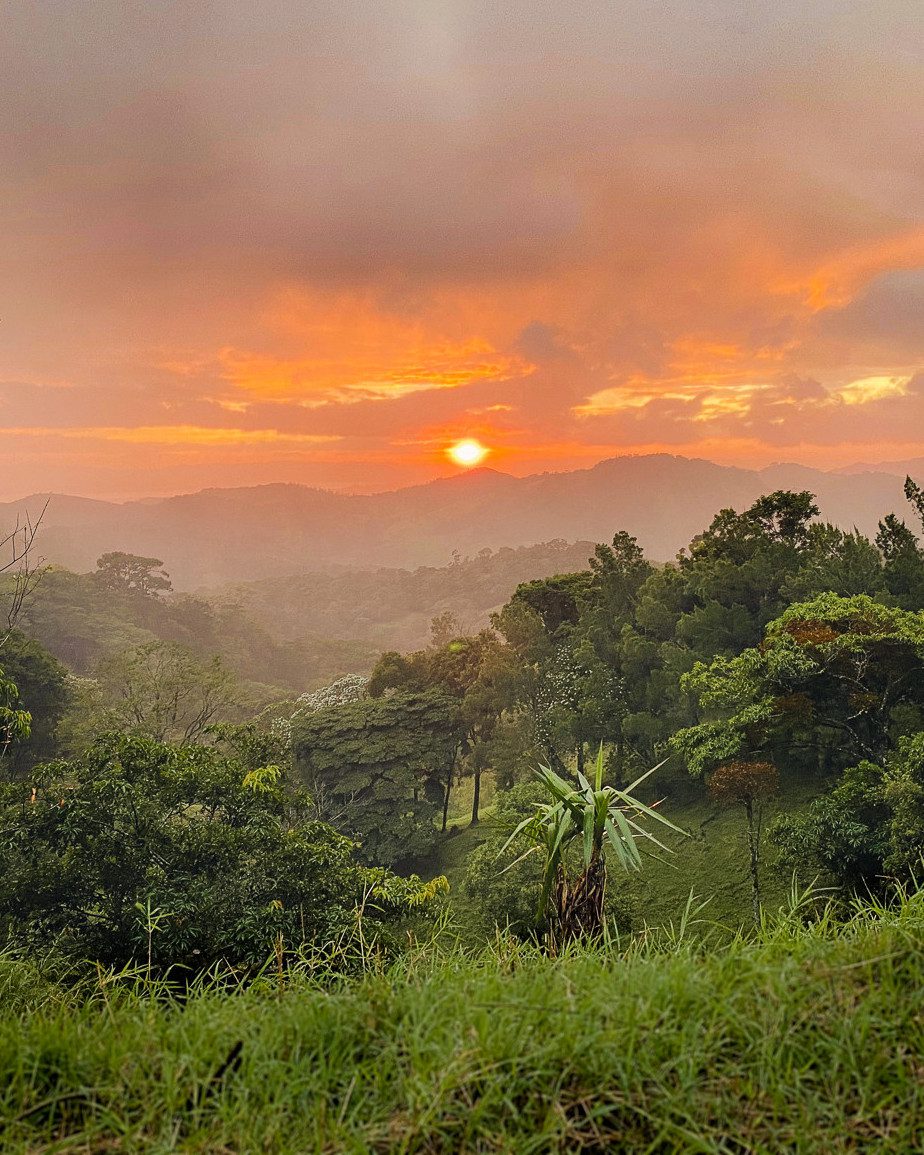
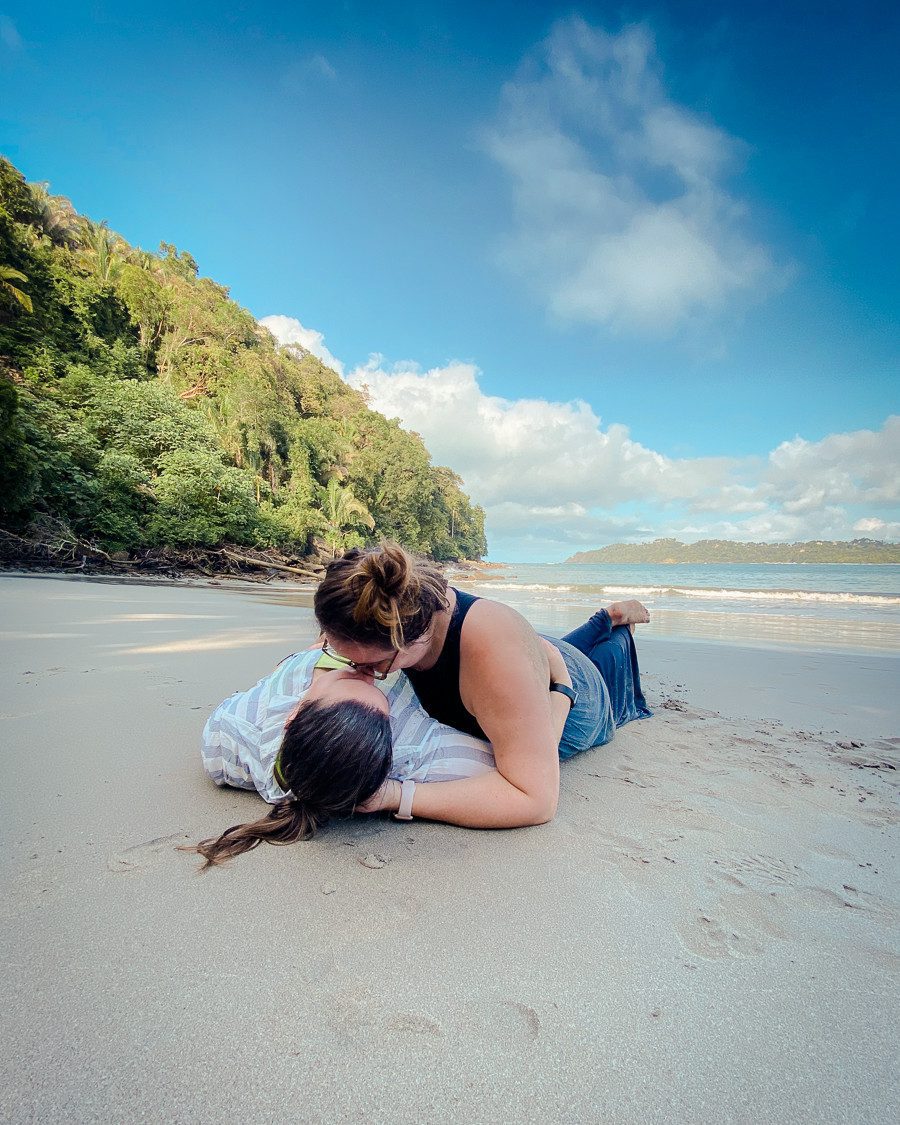
Leave A Comment